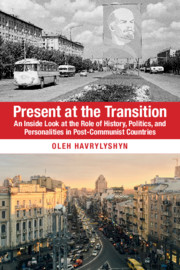 Present at the Transition
Present at the Transition Book contents
- Present at the Transition
- Present at the Transition
- Copyright page
- Dedication
- Contents
- Figures
- Tables
- Preface
- Acknowledgments
- Abbreviations
- Introduction
- Part I The Diverse Paths Taken in Transition
- Part II Choice of Strategy
- 3 Historical Legacies
- 4 Reform Commitment of Political Leaders and Populations
- 5 The Role of Technocrats
- 6 External Incentives and Pressures
- Part III Domestic Vested Interests and Reforms
- Part IV Outcomes and Prospects
- Bibliography
- Index
5 - The Role of Technocrats
from Part II - Choice of Strategy
Published online by Cambridge University Press: 04 May 2020
- Present at the Transition
- Present at the Transition
- Copyright page
- Dedication
- Contents
- Figures
- Tables
- Preface
- Acknowledgments
- Abbreviations
- Introduction
- Part I The Diverse Paths Taken in Transition
- Part II Choice of Strategy
- 3 Historical Legacies
- 4 Reform Commitment of Political Leaders and Populations
- 5 The Role of Technocrats
- 6 External Incentives and Pressures
- Part III Domestic Vested Interests and Reforms
- Part IV Outcomes and Prospects
- Bibliography
- Index
Summary
More than a half-century of isolation and ideological limits meant theoretical and practical knowledge of market economics was very limited. But the view exemplified by President Kravchuk of Ukraine that before reforms started one needed to train experts and managers was much overstated. In retrospect, it is clear that enough expertise was available to move forward, especially in Central Europe where many academics had exposure to Western economics. In the USSR, the numbers were indeed far lower, but these could be easily supplemented by foreign advisors –some diaspora returnees, others seconded from international organizations. Most important, the numbers of market experts needed was not large – a few ministerial and deputy ministerial positions, and heads of key departments numbered not in the thousands nor even hundreds. The best example of the limited need was the Baltics, which were among the fastest reformers with virtually no experts in market economics; a physicist Einars Repše, heading the Central Bank, was considered by international experts one of the most effective in the entire region. The chapter makes these arguments while providing an inside look at many key individuals involved, including Balcerowicz in Poland, Bokros of Hungary, Gaidar in Russia, and Pynzenyk in Ukraine.
- Type
- Chapter
- Information
- Present at the TransitionAn Inside Look at the Role of History, Politics, and Personalities in Post-Communist Countries, pp. 104 - 129Publisher: Cambridge University PressPrint publication year: 2020
